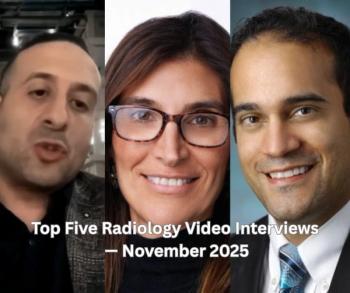
Post-Mastectomy Bilateral Breast MRI Detects Asymptomatic Cancers
Research provides evidence for imaging mastectomy site during opposite-breast cancer screening.
Follow-up MRI scans on women who have had breast cancer should be bilateral – even for asymptomatic patients who went through mastectomy, new research shows.
According to researchers from the University of California at San Francisco (UCSF), led by clinical fellow Molly Chapman, M.D., during a contralateral breast MRI cancer screening, breast MRI can detect 10 cancers per 1,000 exams conducted on the side of previous mastectomy.
“The results of our study support current American College of Radiology practice parameters for MRI to perform all breast MRI studies as bilateral examinations, even after mastectomy,” Chapman and her colleagues wrote. “Additionally, the cancer detection rate of 10 cancers per 1,000 examinations in our cohort indicates a need for larger prospective studies on the benefit of MRI screening in this patient population.”
Ongoing conversation exists about the appropriateness of including imaging surveillance to follow-up services for women who have had mastectomies. Although the American College of Radiology recently released updated screening guidelines on mammography and ultrasound in women who have undergone mastectomies or reconstructive surgeries, no clear guidance currently exists for breast MRI.
Related Content:
To provide greater clarity on how well breast MRI can pinpoint the recurrence of asymptomatic breast cancer in the site of a mastectomy during a cancer screening in the opposite breast, Chapman’s team evaluated 402 breast MRI exams from 191 asymptomatic women. These patients had undergone unilateral therapeutic mastectomies between January 2010 and January 2016.
Among the study participants, most had already completed breast reconstruction post-mastectomy (79.4 percent). And, 98.3 percent of findings were benign. Only a small number of scans – 7 out of 402 – were suspected of malignancy, falling to BI-RADS 4. Four were biopsied and confirmed cancerous. Follow-up imaging resolved the initial finding for the remaining three suspicious scans. Only two scans produced false negatives.
Based on these results, the team determined, there is a need to conduct breast MRI screenings on mastectomy sites even if patients are not exhibiting symptoms. There is a likelihood this will impact a growing number of women, they said.
“This population is expected to increase with rising mastectomy rates and because women with a personal history of breast cancer and dense breast tissue or who were younger than 50 years old at cancer diagnosis are now considered candidates for high-risk screening MRI,” the team explained.
Newsletter
Stay at the forefront of radiology with the Diagnostic Imaging newsletter, delivering the latest news, clinical insights, and imaging advancements for today’s radiologists.



























